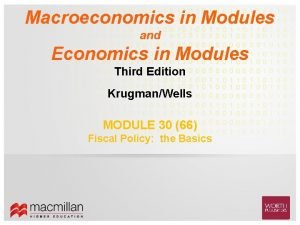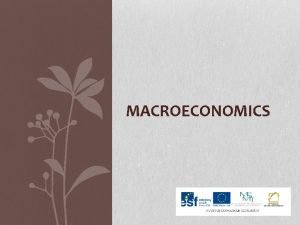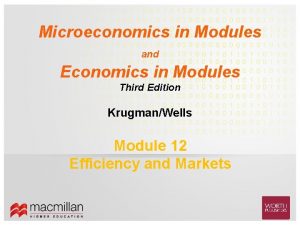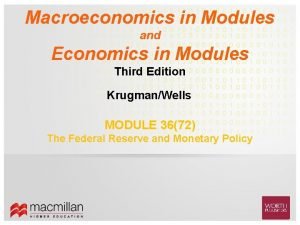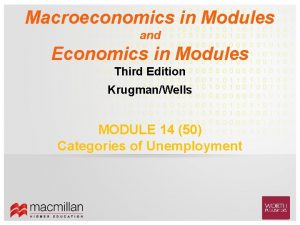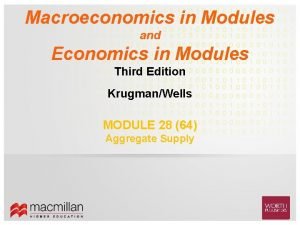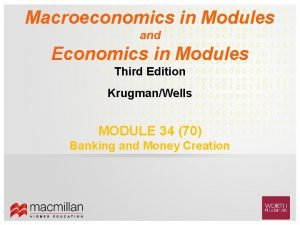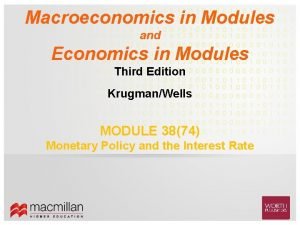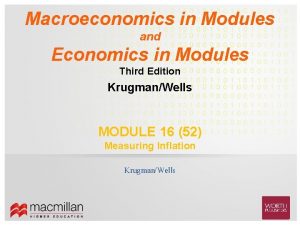Macroeconomics in Modules and Economics in Modules Third









- Slides: 9

Macroeconomics in Modules and Economics in Modules Third Edition Krugman/Wells MODULE 20 (56) Savings, Investment Spending, and the Financial System

What You Will Learn 1 Why the savings-investment spending identity is true 2 The relationship between savings and investment spending 2

Matching Up Savings and Investment Spending • In a simplified economy: – (1) Total Income = Total Spending – (2) Total income = Consumption spending + Savings • Meanwhile, spending consists of either consumption spending or investment spending: – (3) Total spending = Consumption spending + Investment spending • Putting these together, we get: – (4) Consumption spending + Savings = Consumption spending + Investment spending • Subtract consumption spending from both sides, and we get: – (5) Savings = Investment spending 3

Matching Up Savings and Investment Spending • Adding government and economic interaction with the rest of the world to this simplified economy results in two changes: 1. First, governments can save, too. 2. Second, savings need not be spent on physical capital located in the same country. 4

Matching Up Savings and Investment Spending • The budget surplus is the difference between tax revenue and government spending when tax revenue exceeds government spending. • The budget deficit is the difference between tax revenue and government spending when government spending exceeds tax revenue. • The budget balance is the difference between tax revenue and government spending. • National savings, the sum of private savings plus the budget balance, is the total amount of savings generated within the economy. • Capital inflow is the net inflow of funds into a country. 5

Matching Up Savings and Investment Spending • An open economy is an economy in which goods are money can flow into and out of the country • Net capital inflow is equal to the total inflow of foreign funds minus the total outflow of domestic funds to other countries • Investment spending = National savings + Net capital inflow 6

Matching Up Savings and Investment Spending The Savings-Investment Spending Identity in Open Economies: The United States and Japan, 2007 7

Summary 1. Investment in physical capital is necessary for long-run economic growth. 2. According to the savings–investment spending identity, savings and investment spending are always equal for the economy as a whole. 3. The government is a source of savings when it runs a positive budget balance or budget surplus; it is a source of dissavings when it runs a negative budget balance or budget deficit. 4. In a closed economy, savings is equal to national savings, the sum of private savings plus the budget balance. 8

Summary 5. In an open economy, savings is equal to national savings plus capital inflow of foreign savings. 6. In an open economy, investment spending is equal to national savings and net capital inflow. 9
 Macroeconomics in modules
Macroeconomics in modules Branch of economics
Branch of economics Economics modules
Economics modules Mount hume classification
Mount hume classification Mounts classification
Mounts classification Maastricht university school of business and economics
Maastricht university school of business and economics Principles of economics third edition pdf
Principles of economics third edition pdf Mathematical vs non mathematical economics
Mathematical vs non mathematical economics Microeconomic examples
Microeconomic examples Venn diagram of macroeconomics and microeconomics
Venn diagram of macroeconomics and microeconomics
